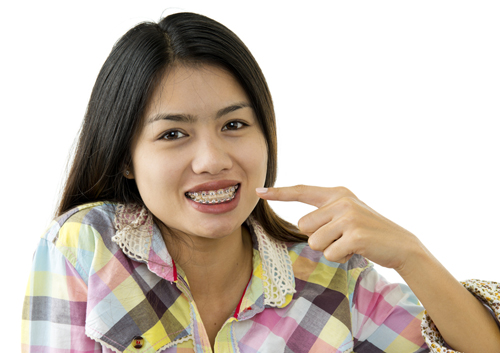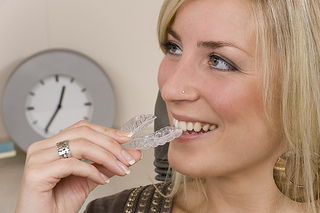What’s so great about self-ligating braces? Five things you need to know
June 23rd, 2021

Parents of a certain age will no doubt remember the teen comedies of the 1980s. These movies typically included a character so wired up with orthodontic apparatus (elaborate metal braces, rubber bands, a mountain of headgear) that he or she looked like some sort of electrical machinery. In recent years, the technological advancements in braces have not only made this character a thing of the past, but if your child needs braces to fix crooked teeth, you no longer need to worry about him or her being called “brace face” with a “tin grin.”
Traditional braces use a system of archwires, brackets, and rubber bands to straighten and realign crooked teeth. Self-ligating braces that Dr. Gina Pinamonti and our team at Gina B. Pinamonti, DDS Orthodontics provide, by contrast, use specialized clips to hold the archwires in place instead of rubber bands. But what makes self-ligating braces so good?
- Self-ligating braces make it easier to keep your teeth clean because there are no rubber bands. Rubber bands collect food particles, and this can lead to an increase in plaque and decay. Have you ever tried to brush for two minutes with a mouth full of rubber bands? It’s tricky. Self-ligating braces improve oral health.
- Self-ligating braces are smaller and less noticeable than conventional braces. Most kids are self-conscious about how they look (flashback to those 1980s comedies), so braces that are subtle and less conspicuous are a huge draw.
- Self-ligating braces are more comfortable than traditional braces. Less pressure and friction are placed on the tooth. These types of braces also need fewer alterations and adjustments, so chances are you will save money by making fewer appointments with our office.
- Self-ligating braces move crooked teeth into place more quickly than conventional braces. In other words, you’re going to wear self-ligating braces for a shorter amount of time than traditional braces.
- Orthodontic work can be expensive. Self-ligating braces, however, cost about the same amount of money as traditional braces.
Dr. Gina Pinamonti and our team are proud to offer self-ligating braces as an alternative to traditional metal braces. Ask our team if they are right for you by giving us a call at our Pittsburg, KS office!




 Website Powered by Sesame 24-7™
Website Powered by Sesame 24-7™